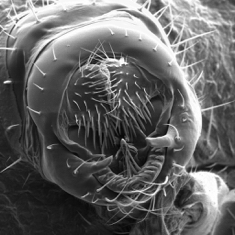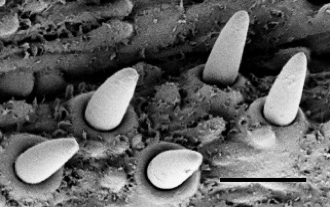
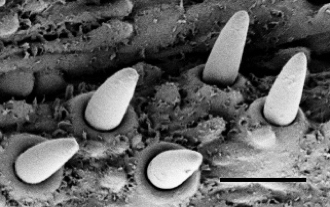
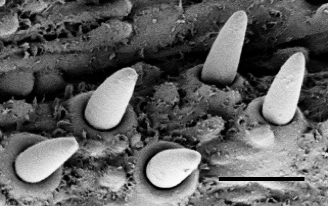

The rapid evolution of male genital morphology is thought to be driven primarily by sexual selection operating within species. Because male reproductive traits must coevolve with the female reproductive traits to ensure successful copulation and insemination, divergence in these traits among nascent species have the potential to reduce reproductive fitness and ultimately contribute to the speciation process. We are interested in understanding the importance of both interspecific variation in genital morphology and interspecific variation in the neural architecture/function in causing sensory reproductive isolation. We use two different insect models to study this phenomemon.
The Genetics and Development of Rapidly Evolving Traits
Sexual Selection and Coevolution of Reproductive Traits
Male external genitalia are some of the most rapidly evolving morphological structures in animals. Among the D. melanogaster complex species, males possess two heavily sclerotized cuticular genital structures known as the epandrial posterior lobes, which show striking differences in size and shape among species. We have identified several regions of the genome that have large effects on interspecific variation in posterior lobe morphology, and experiments are underway to identify the genes in these regions that are important for specifying species differences in morphology, characterize evolutionary change at these loci, and understand the relationship among these genes with respect to the underlying gene regulatory network architecture.
Damselflies (Odonata, Zygoptera) are one of the few groups in which both mechanical and sensory “lock-and-key” mechanisms appear to be important for the evolution of reproductive isolation. We are studying North American populations of damselflies in the genus Enallagma to better understand the mechanical and behavioral nature of genital incompatibilities, and to dissect the genetic basis of the male and female coevolved morphologies. We are also surveying levels of introgression between sympatric natural populations to test the efficacy of morphological differences in restricting gene flow.
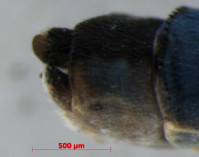
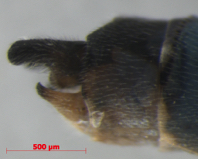
Current Research Areas
We are also interested in understanding how evolutionary change at loci important for specifying differences in male genitalia directs development to give rise to species-specific morphologies. We are leveraging new molecular technologies in the D. simulans clade species that allow us to test the functional importance of genetic variation at loci important for morphology and study the consequences of this variation during development of the genitalia.
E. anna
E. carunculatum
We study the D. melanogaster complex species to test the consequences of interspecific variation in male posterior lobe morphology on both pre- and post-mating reproductive fitness in both sexes. In particular, we are interested in testing female behavioral and reproductive responses to male genital morphology during and after copulation. Our most recent efforts focus on the evolution of species-specific nervous system architecture and function in both the male and female genitalia and in the central nervous system with the ultimate goal of understanding how these differences specify behavioral and physiological responses during mating.
